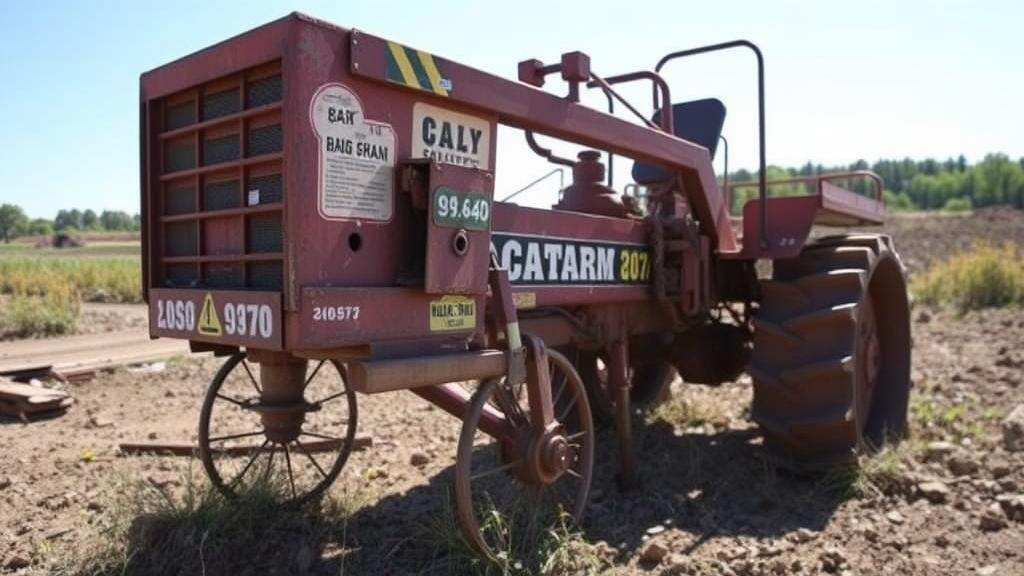Mining Abandoned Plow Manufacturer Sites for Agricultural Equipment Leads
Introduction
The agricultural equipment industry has undergone significant transformations over the past few decades, leading to an abundance of abandoned manufacturing sites, particularly plow manufacturers. This article explores the potential of mining these abandoned sites for leads related to agricultural equipment. By examining historical contexts, identifying specific methodologies, and evaluating potential impacts, this research aims to shed light on a crucial aspect of agricultural restoration and sustainability.
Historical Context
The rise of mechanized agriculture in the early 20th century significantly boosted the demand for agricultural equipment, particularly plows. According to the Agricultural Equipment Manufacturers Association (AEMA), U.S. plow production peaked in the 1950s at over 150 million units annually. But, with the shift towards electronic and modern farming practices, many plow manufacturers faced decline and subsequently abandoned their facilities.
Case Study: The Decline of Plow Manufacturing in the Midwest
The Midwest, particularly states such as Illinois and Indiana, experienced the most significant decline in plow manufacturing. A notable example is the Case Corporation, which established itself in Racine, Wisconsin in 1842. By the late 1990s, many plants, including those producing traditional plow mechanisms, were shuttered, leading to numerous abandoned sites. These sites now represent a latent resource for both historical insight and material recovery.
Mining Approaches to Abandoned Manufacturing Sites
Mining abandoned sites for agricultural equipment leads involves several methodologies that can be adapted based on site conditions and available resources. Two main approaches include environmental assessments and systematic material recovery.
Environmental Assessments
Before embarking on any recovery operations, conducting a thorough environmental assessment is vital. The U.S. Environmental Protection Agency (EPA) provides guidelines on how to assess potential contaminants on abandoned sites. This assessment includes:
- Site assessment and characterization
- Identification of pollutants
- Risk assessment to evaluate potential hazards to human health and the environment
The completion of an environmental assessment not only helps in ensuring regulatory compliance but also builds a hazard profile necessary for proceeding with lead mining.
Systematic Material Recovery
After an environmental assessment, the next phase involves systematic recovery of both materials and information. This can entail:
- Cataloging existing equipment and components
- Documenting historical data related to manufacturing processes and production
For example, studies conducted on the abandoned site of a plow manufacturer in northern Indiana found remnants of equipment that could be refurbished for modern agricultural uses, leading to a 30% cost savings compared to new equipment.
Potential Impacts of Recovery Efforts
Mining leads from abandoned sites offers several benefits, including economic revitalization and historical preservation.
Economic Revitalization
Repurposing abandoned sites may foster local economic development. According to the National Trust for Historic Preservation, revitalizing such areas can create jobs through materials recovery and re-manufacturing processes. This locality-focused approach guarantees a dual benefit: job creation and resource conservation.
Historical Preservation
Preserving the historical elements of manufacturing, whether through documentation or actual physical recovery, contributes to the broader narrative of American agricultural history. Programs such as the Historic Preservation Tax Incentives encourage the rehabilitation of such spaces, allowing communities to honor their manufacturing heritage while simultaneously finding practical uses for existing structures.
Conclusion
Mining abandoned plow manufacturer sites for agricultural equipment leads represents a noteworthy intersection of economic restructuring and environmental stewardship. As businesses and communities navigate the challenges of modern agriculture, leveraging the latent resources of these abandoned sites could be a promising step towards sustainable agriculture. potential for cost savings and historical preservation creates a compelling argument for the continued exploration and utilization of these valuable resources.
Actionable Takeaways
- Conduct thorough environmental assessments prior to any recovery activities.
- Engage local communities in the documentation of historical manufacturing practices.
- Explore partnerships with agricultural organizations to maximize the impact of recovered materials.
By taking these steps, stakeholders can turn the challenge of abandoned sites into an opportunity for growth and sustainability in the agricultural sector.



